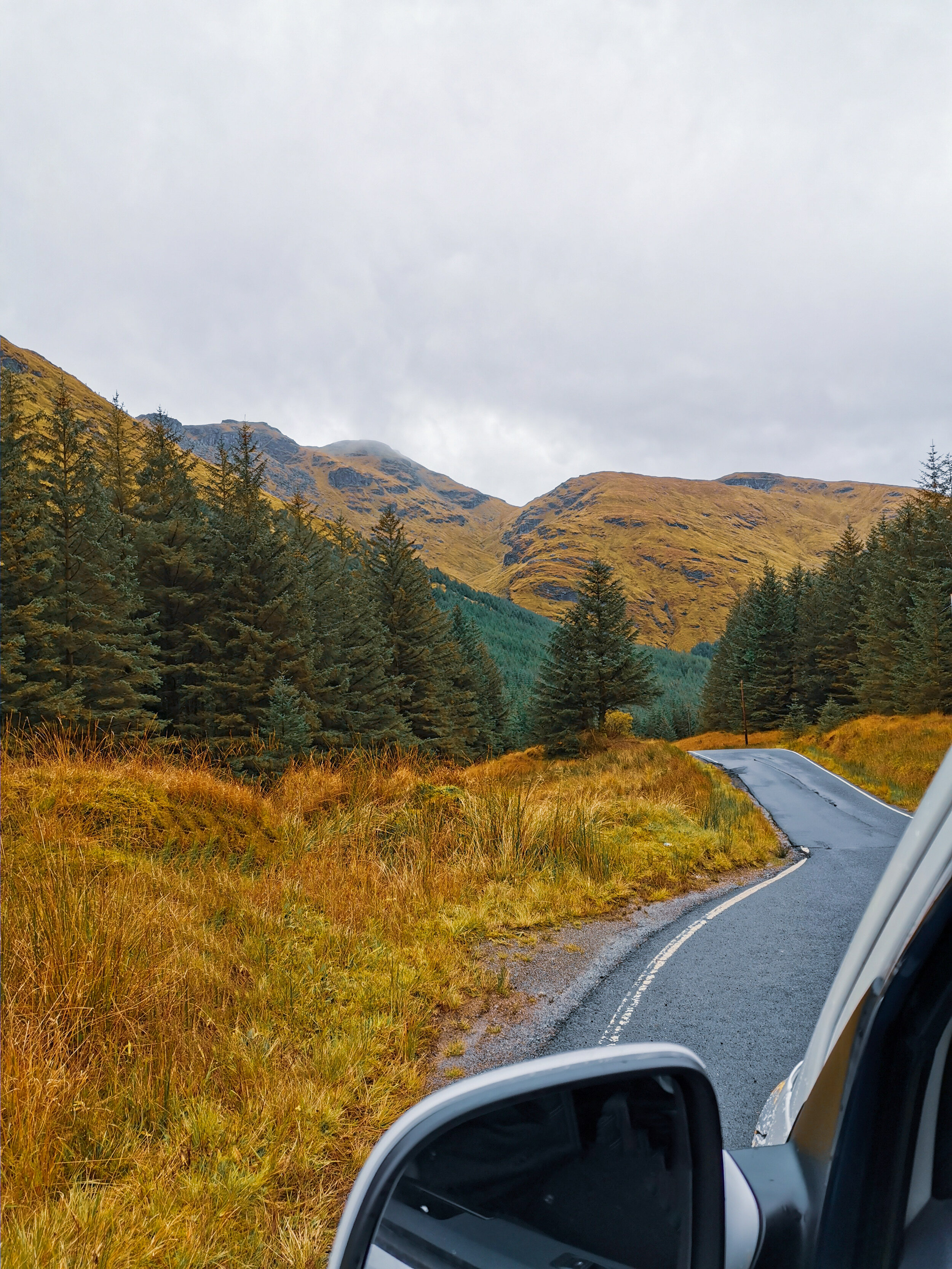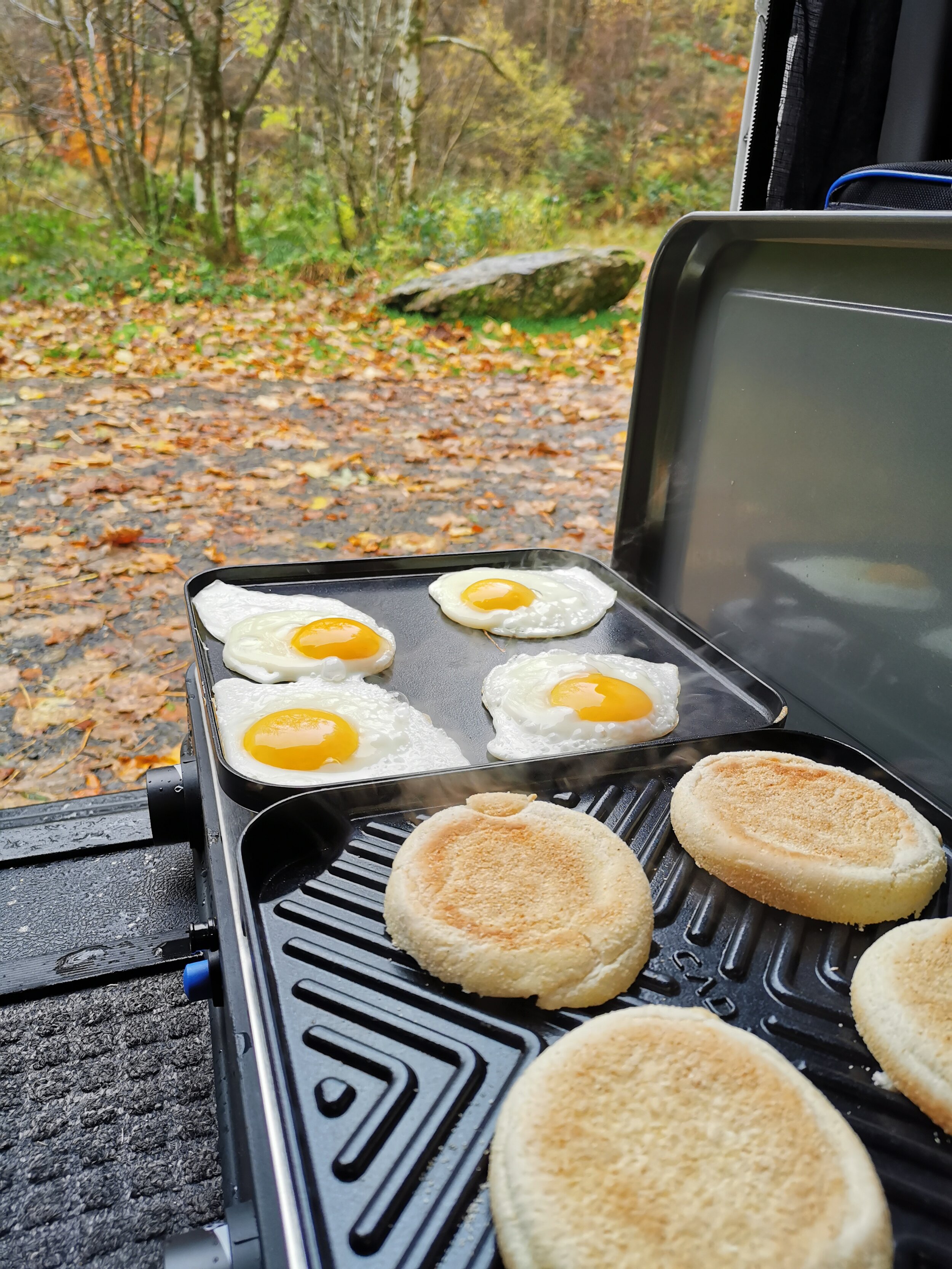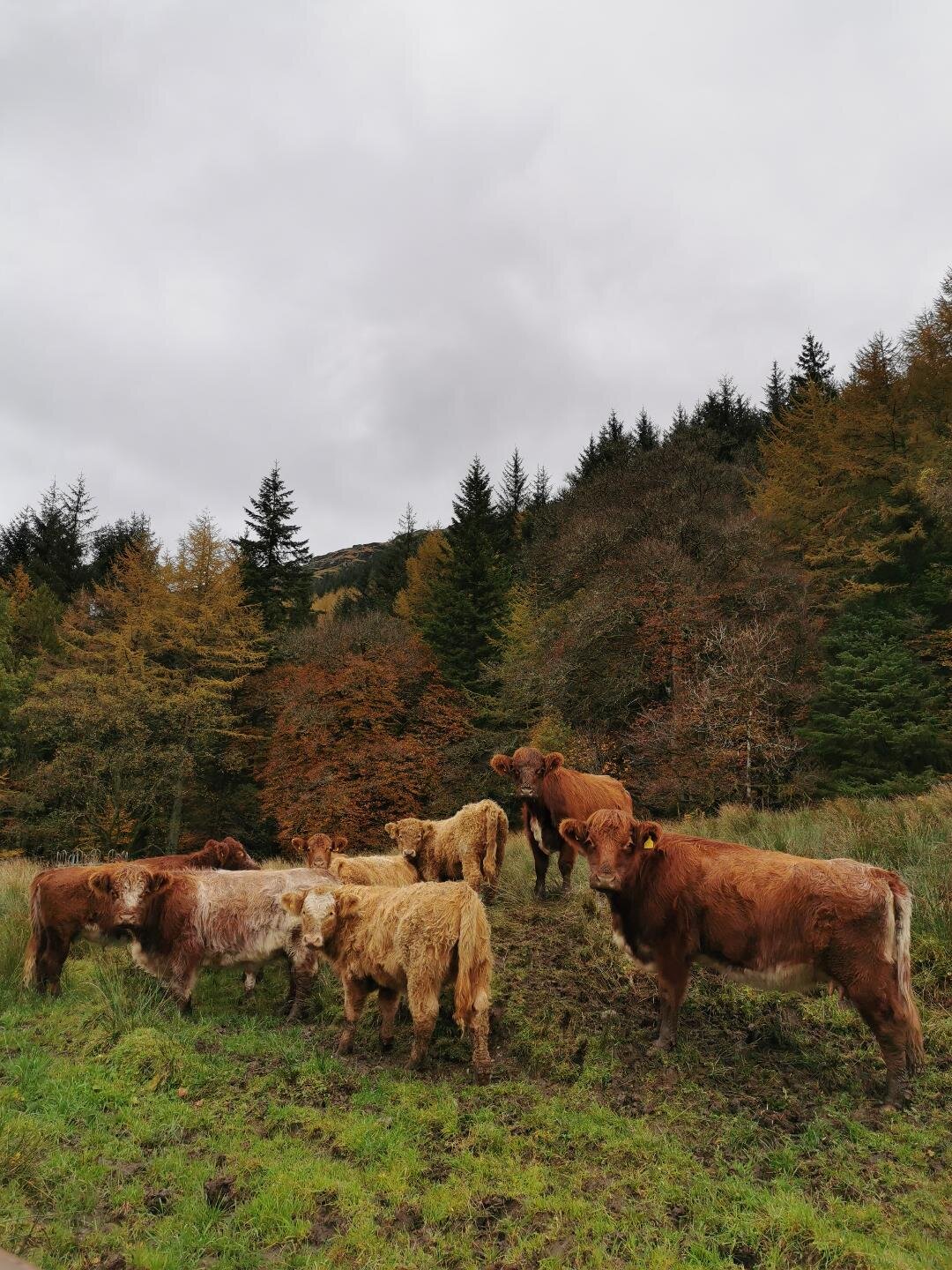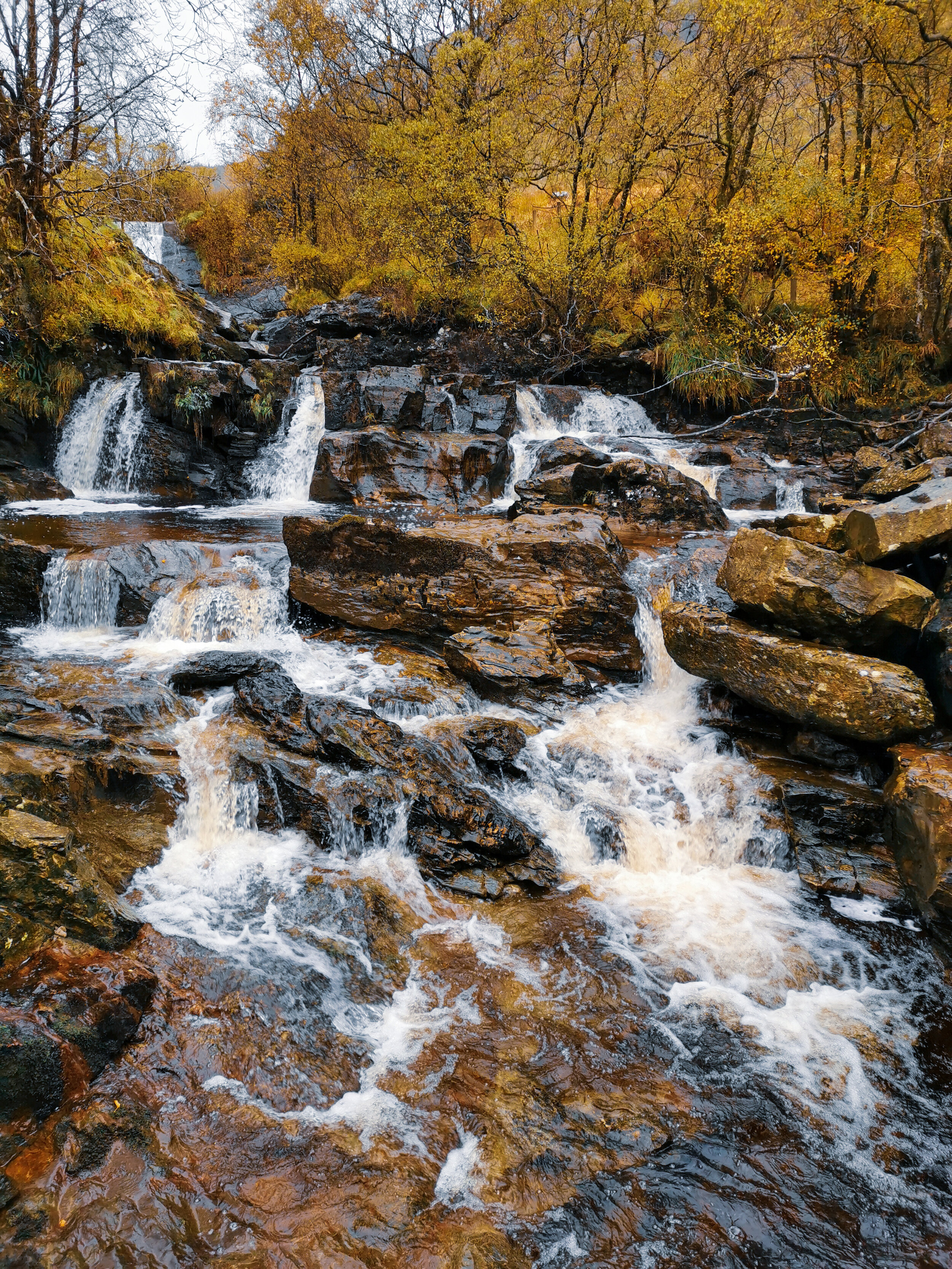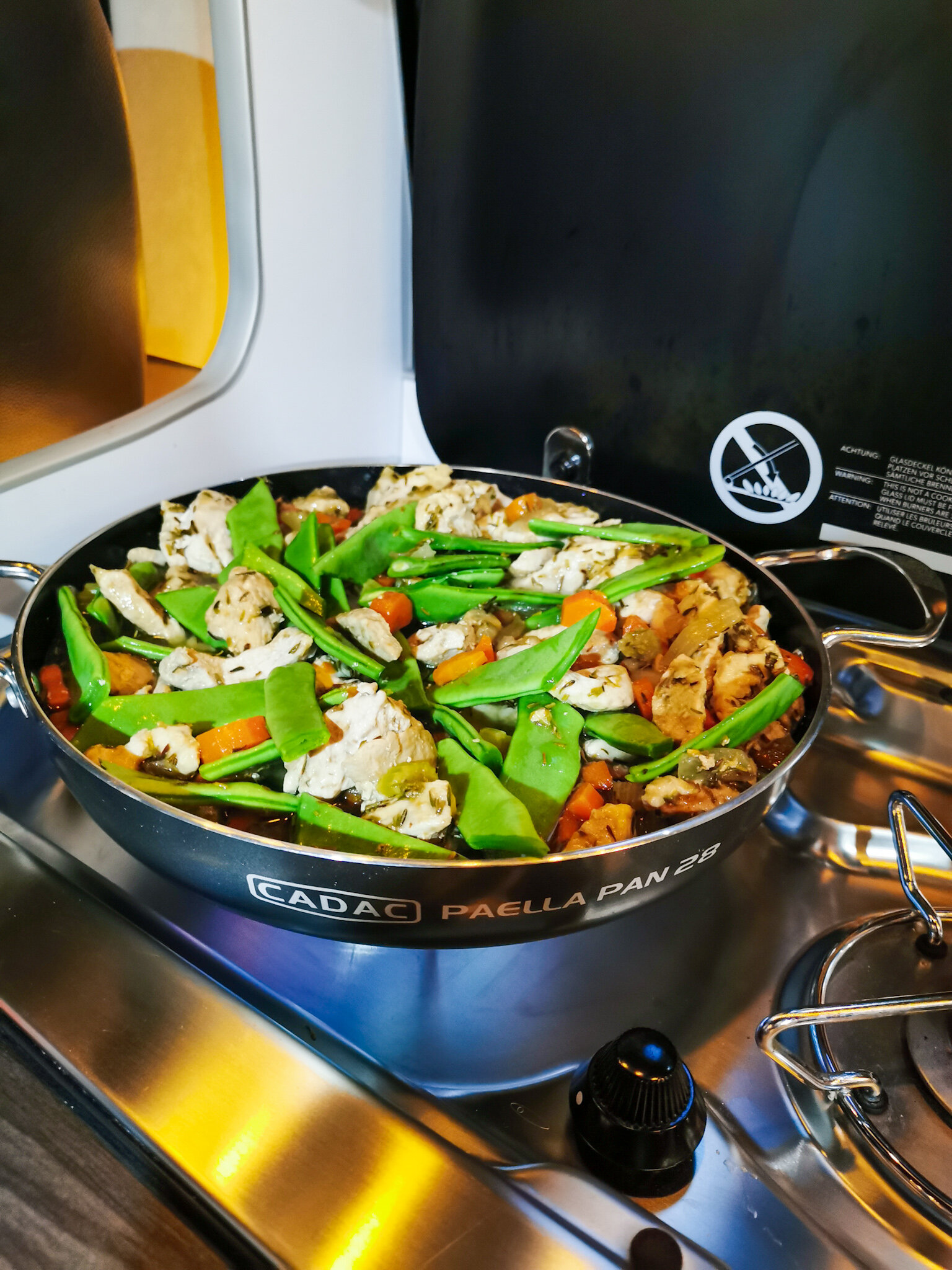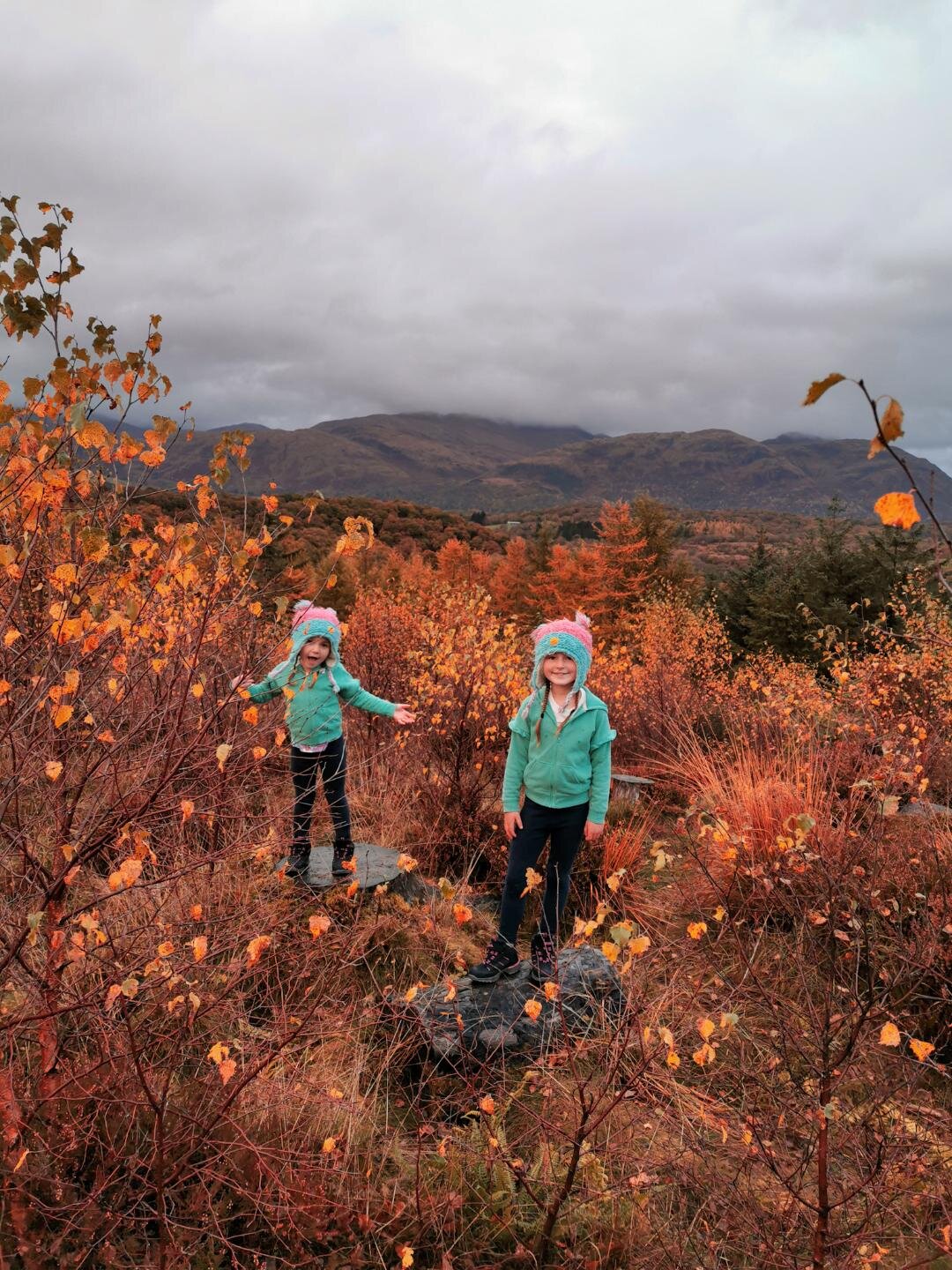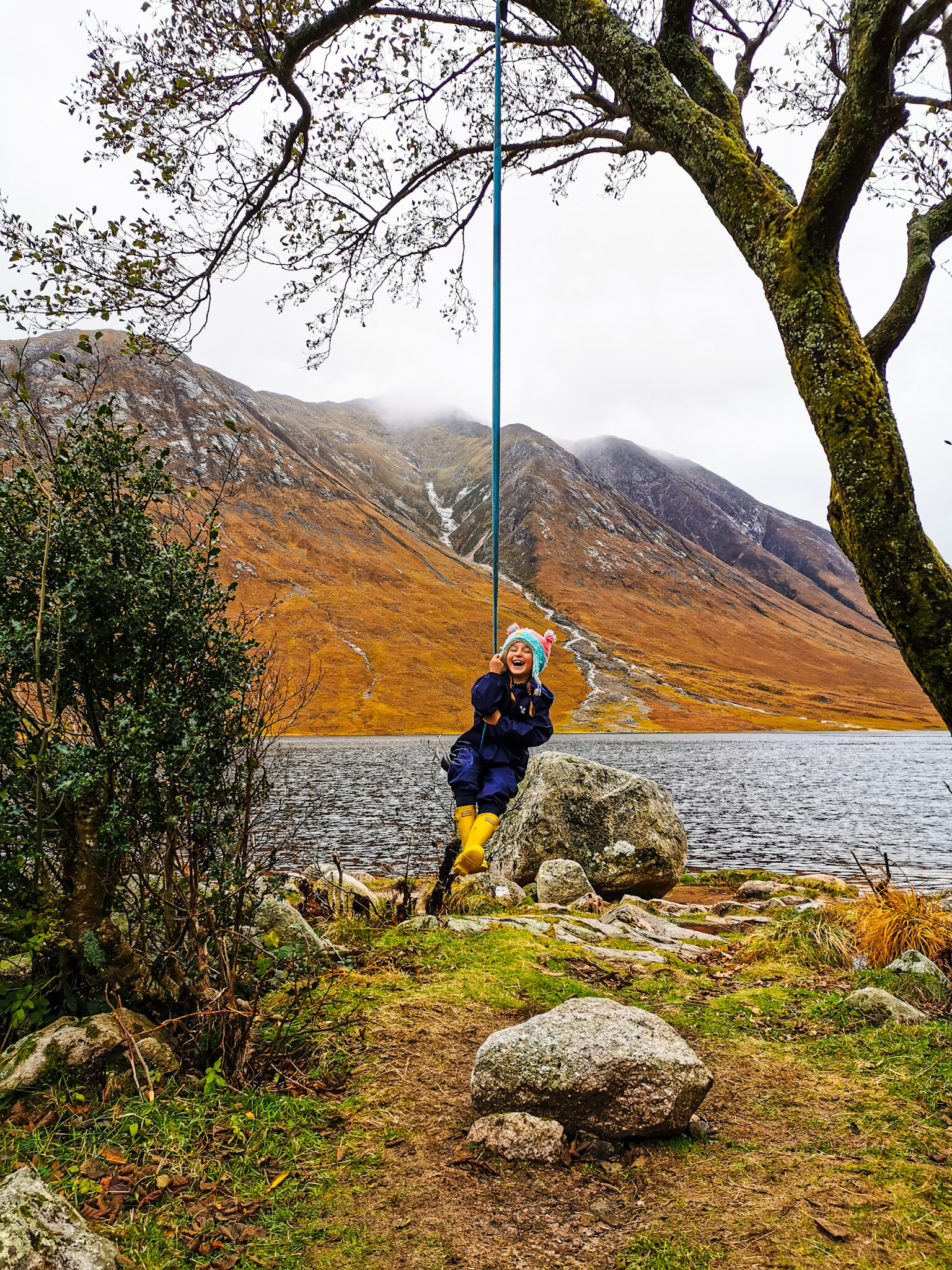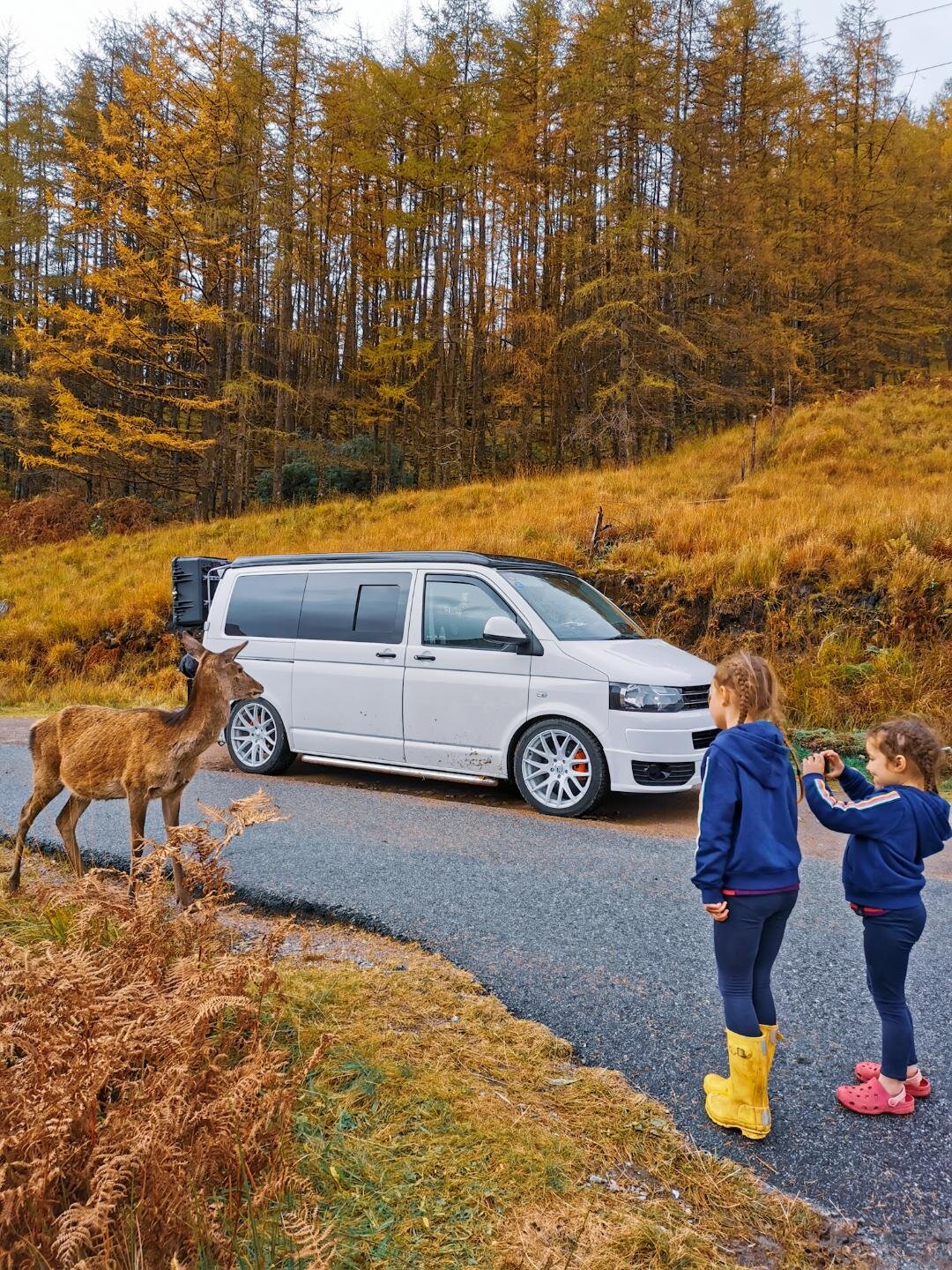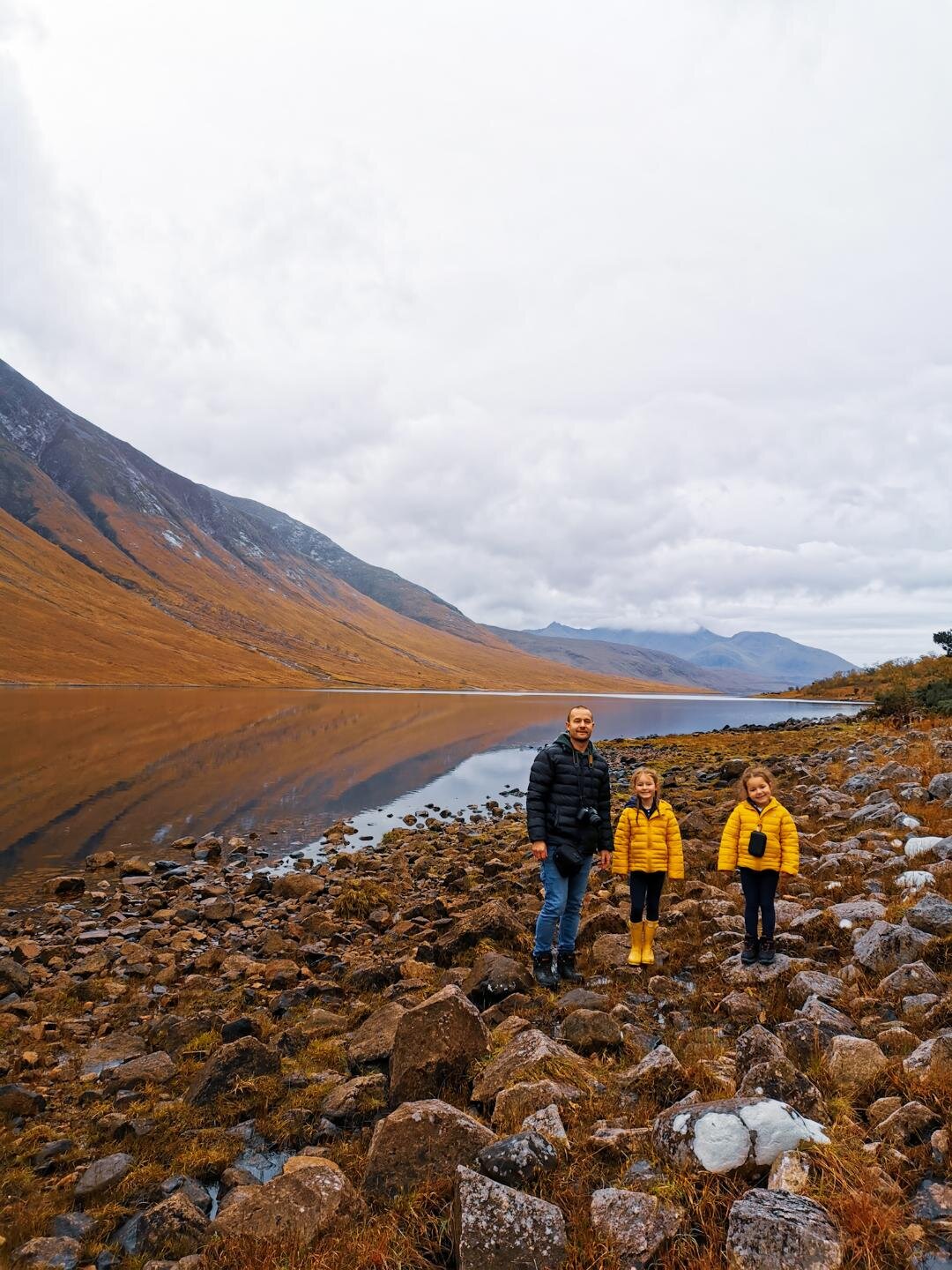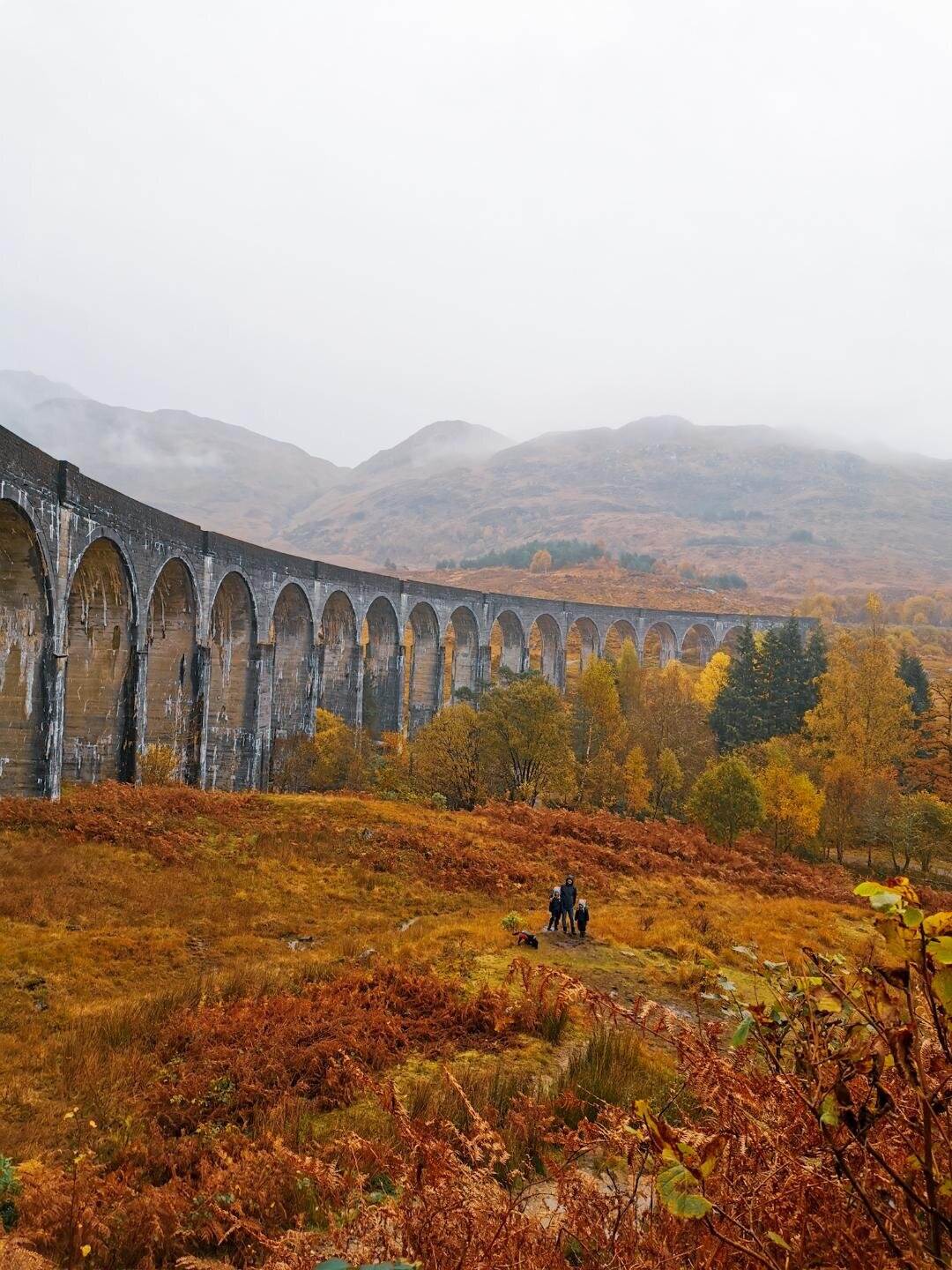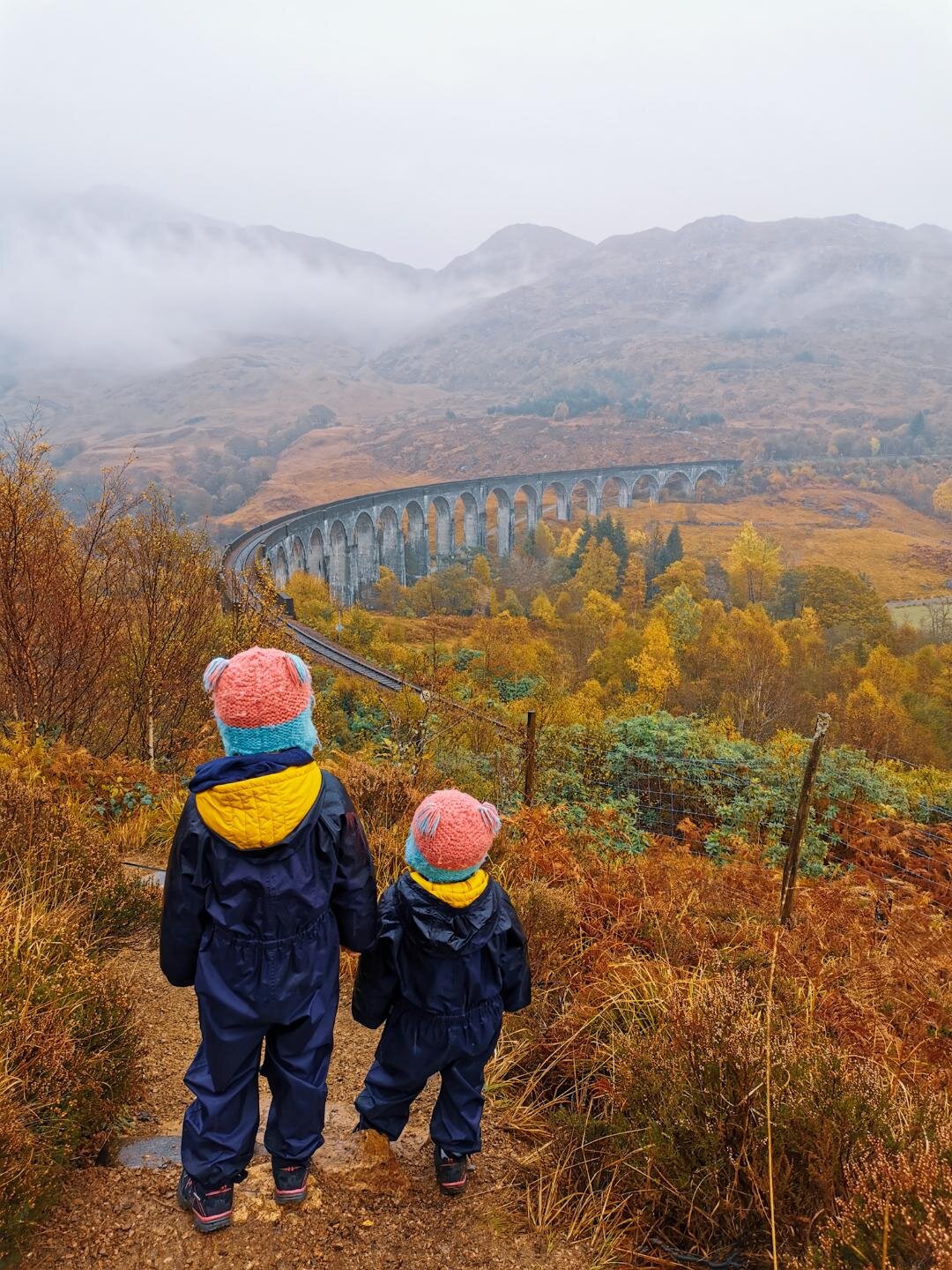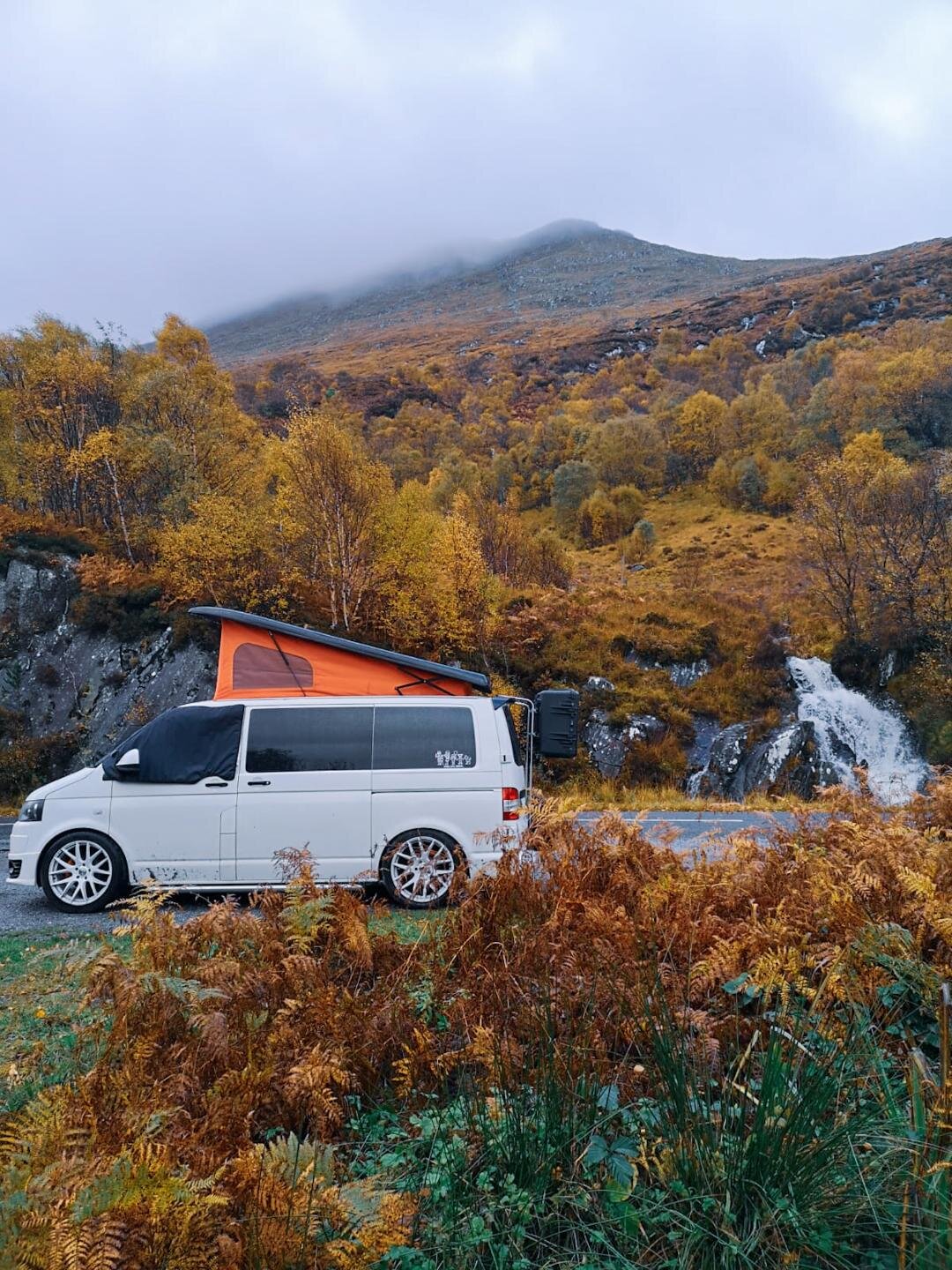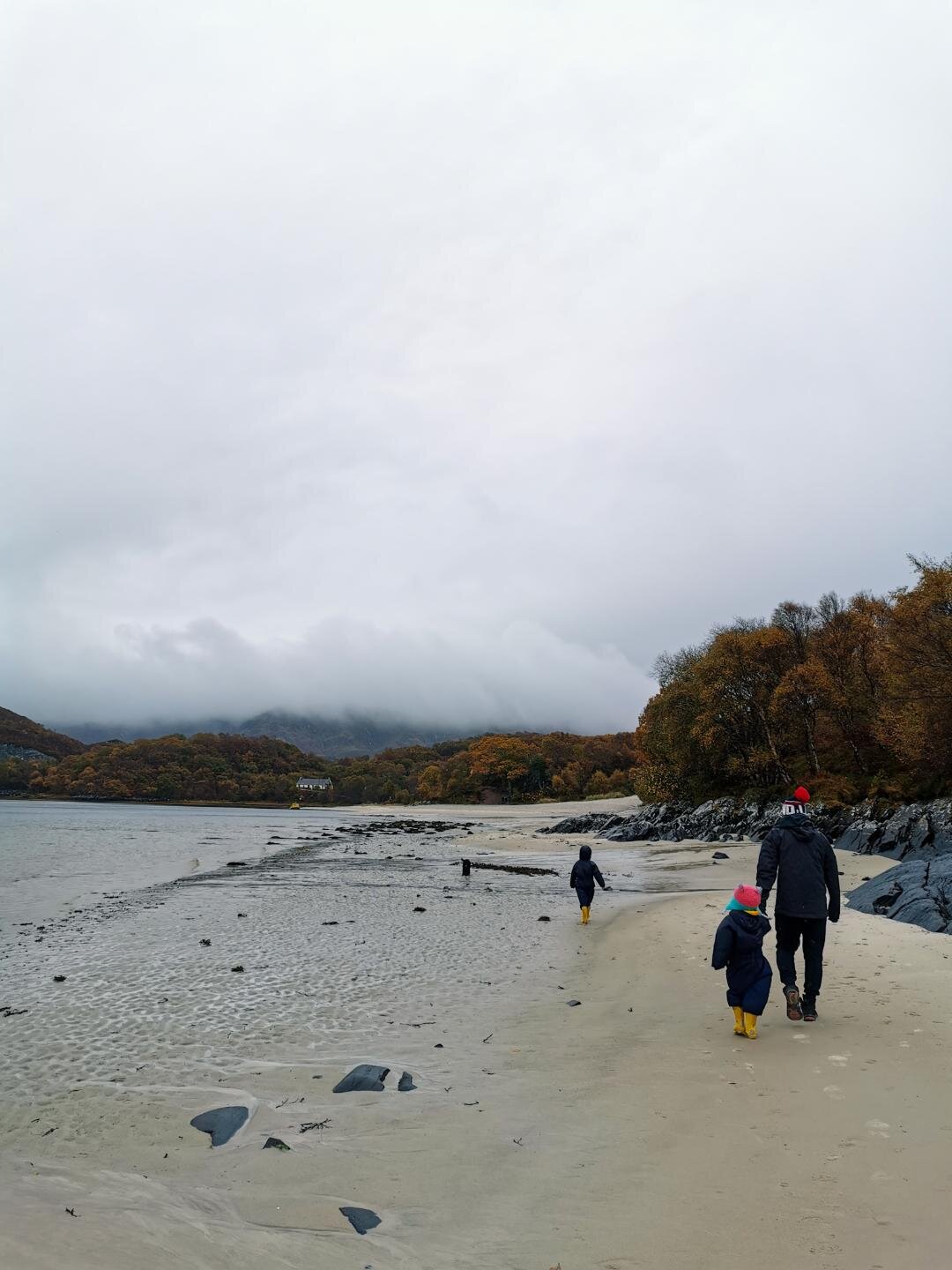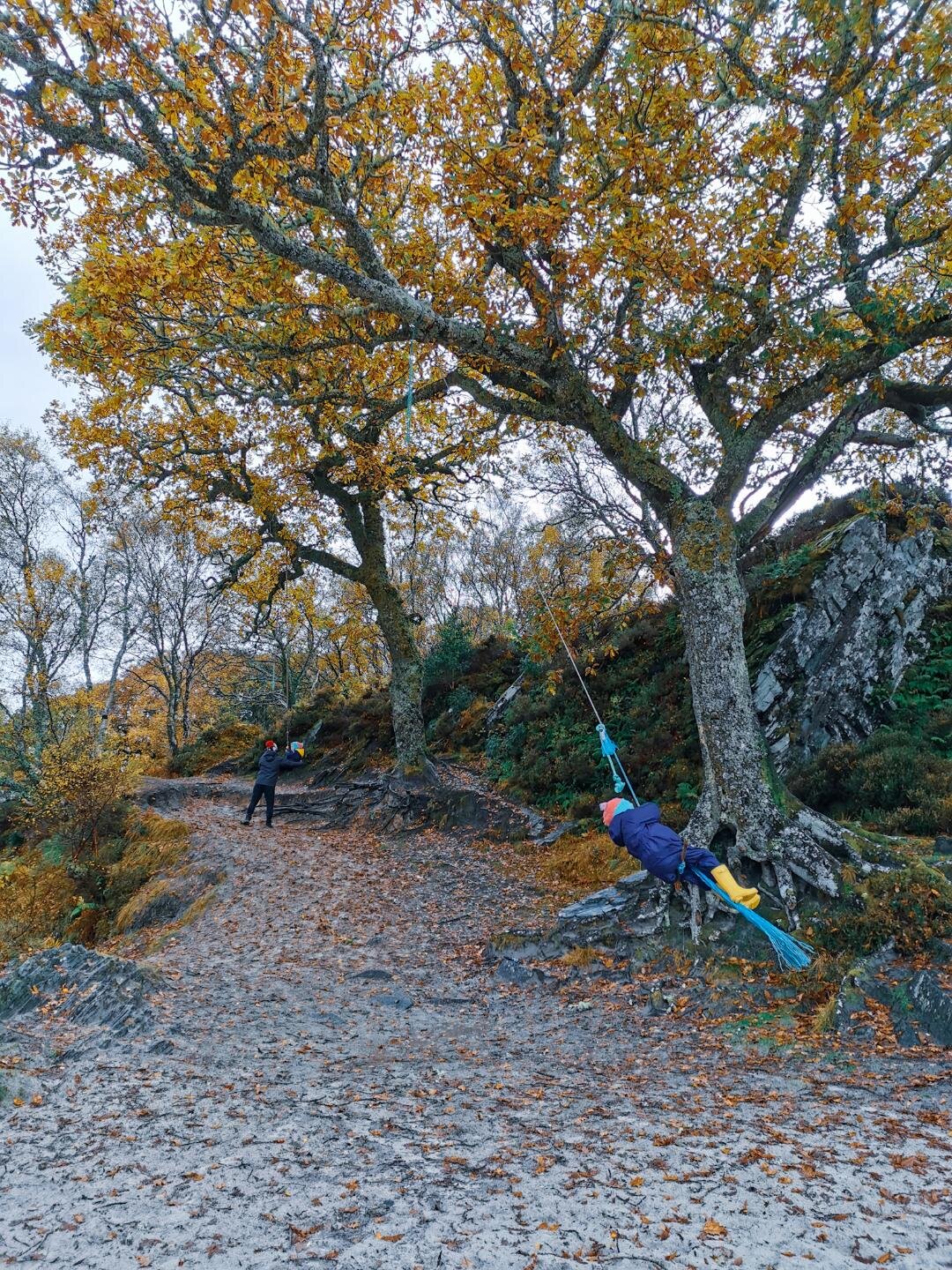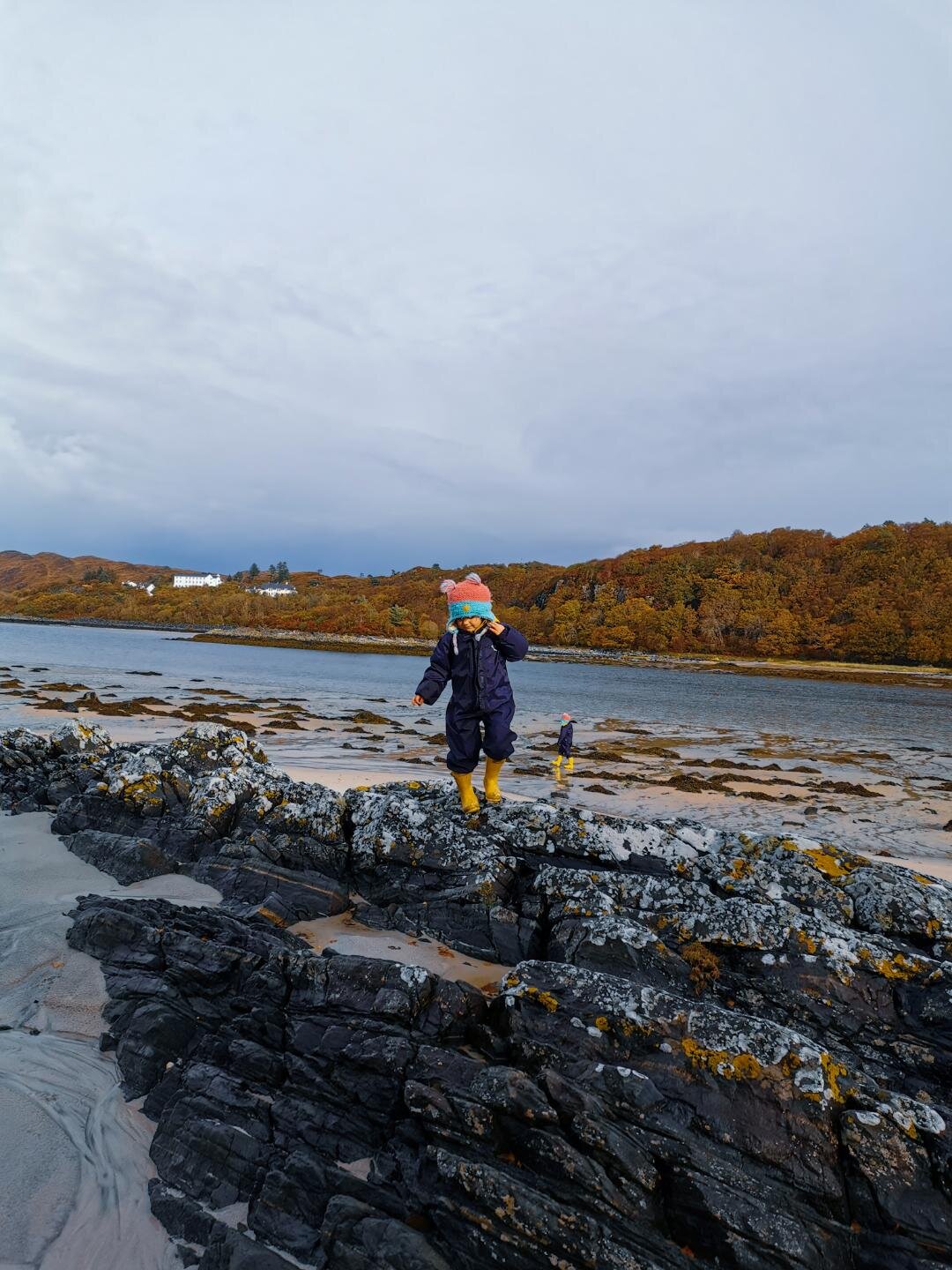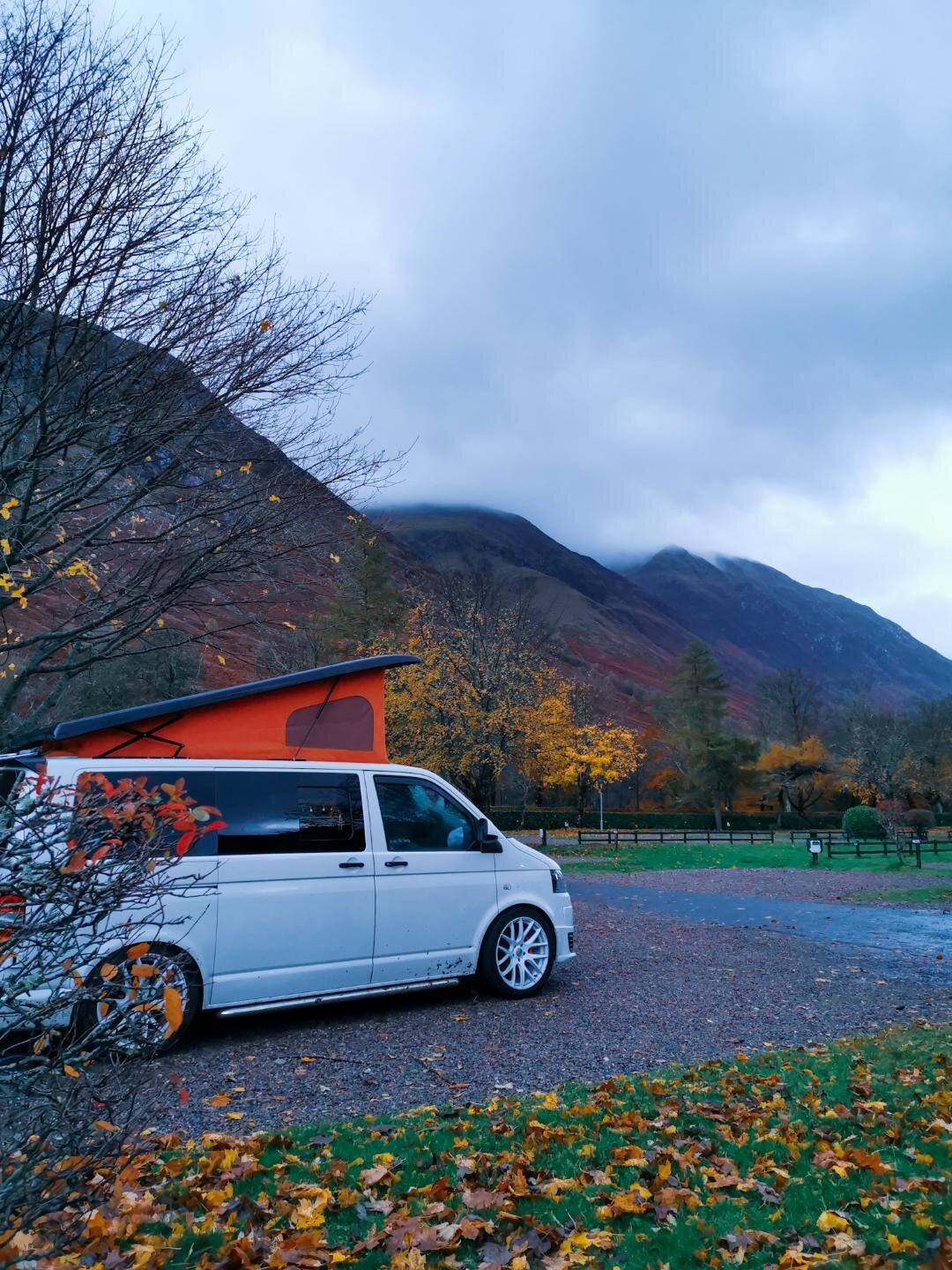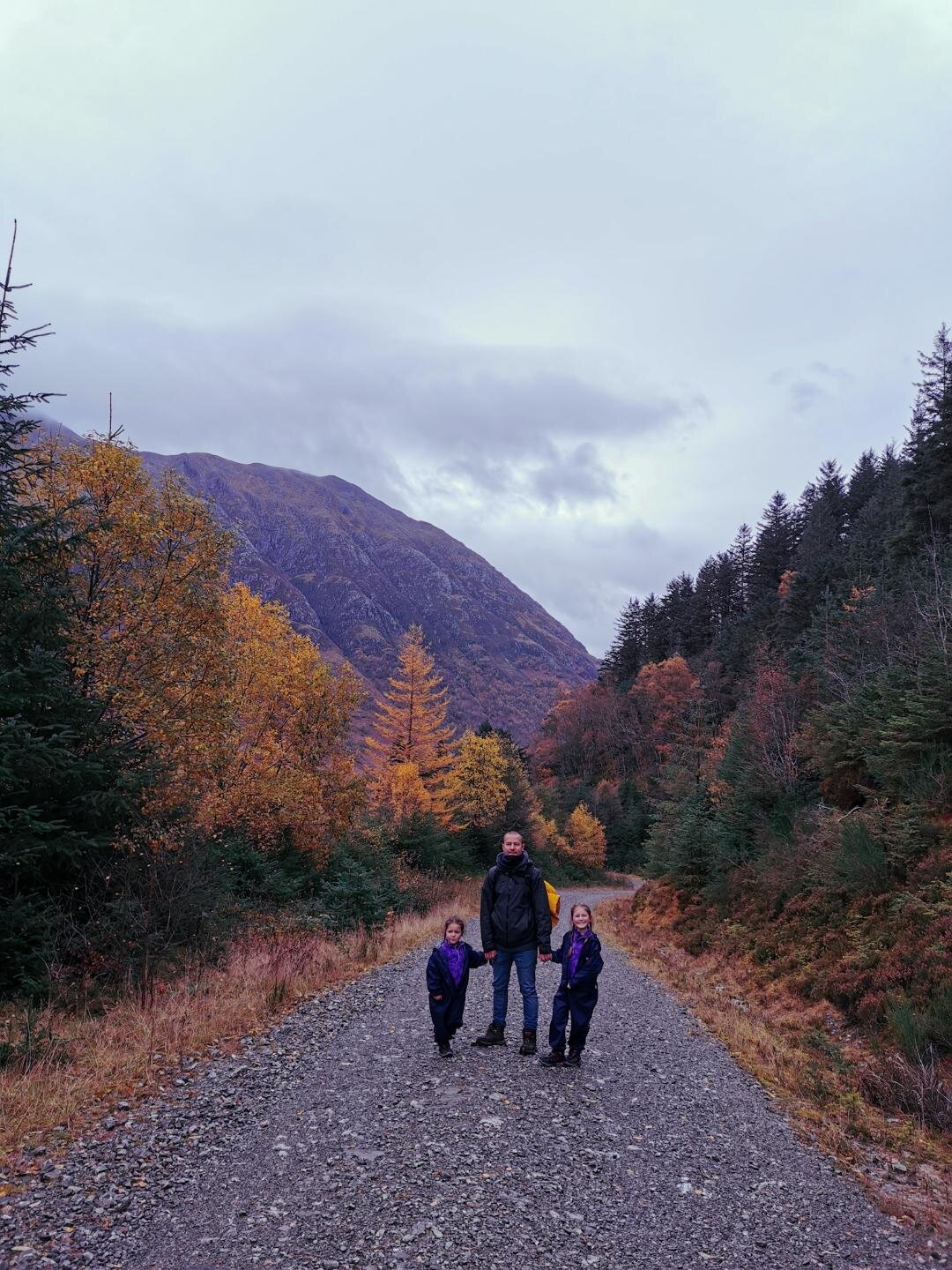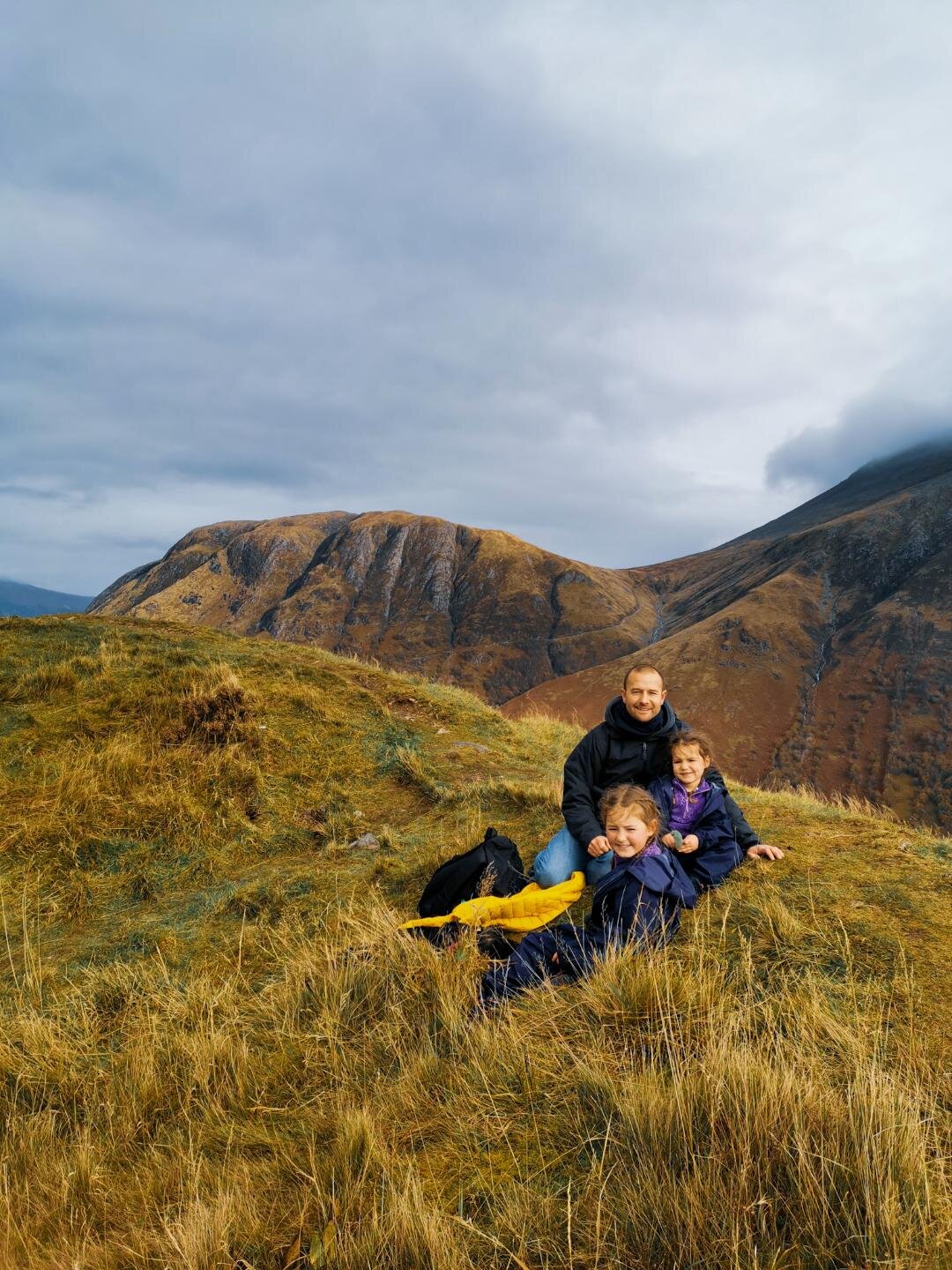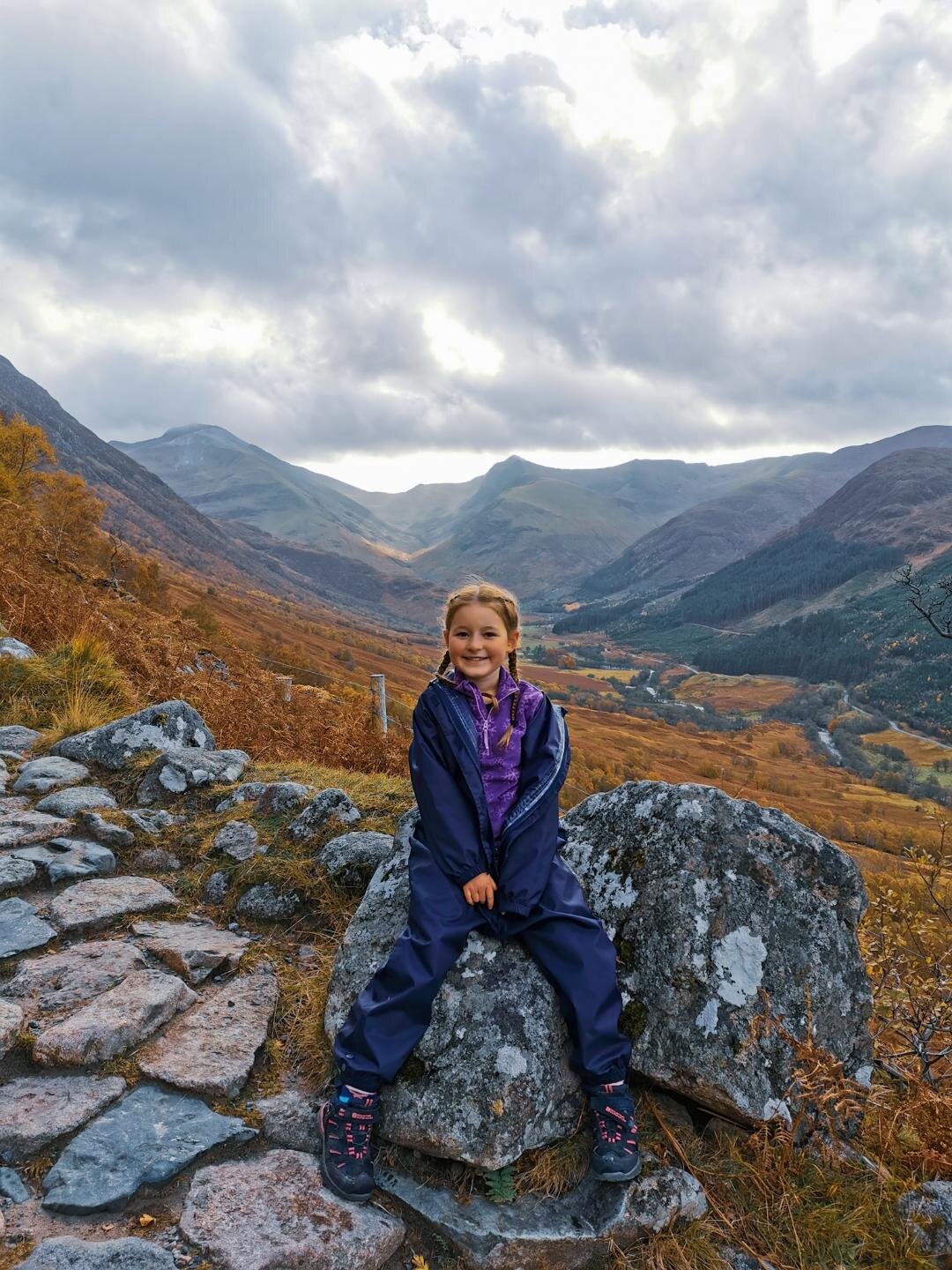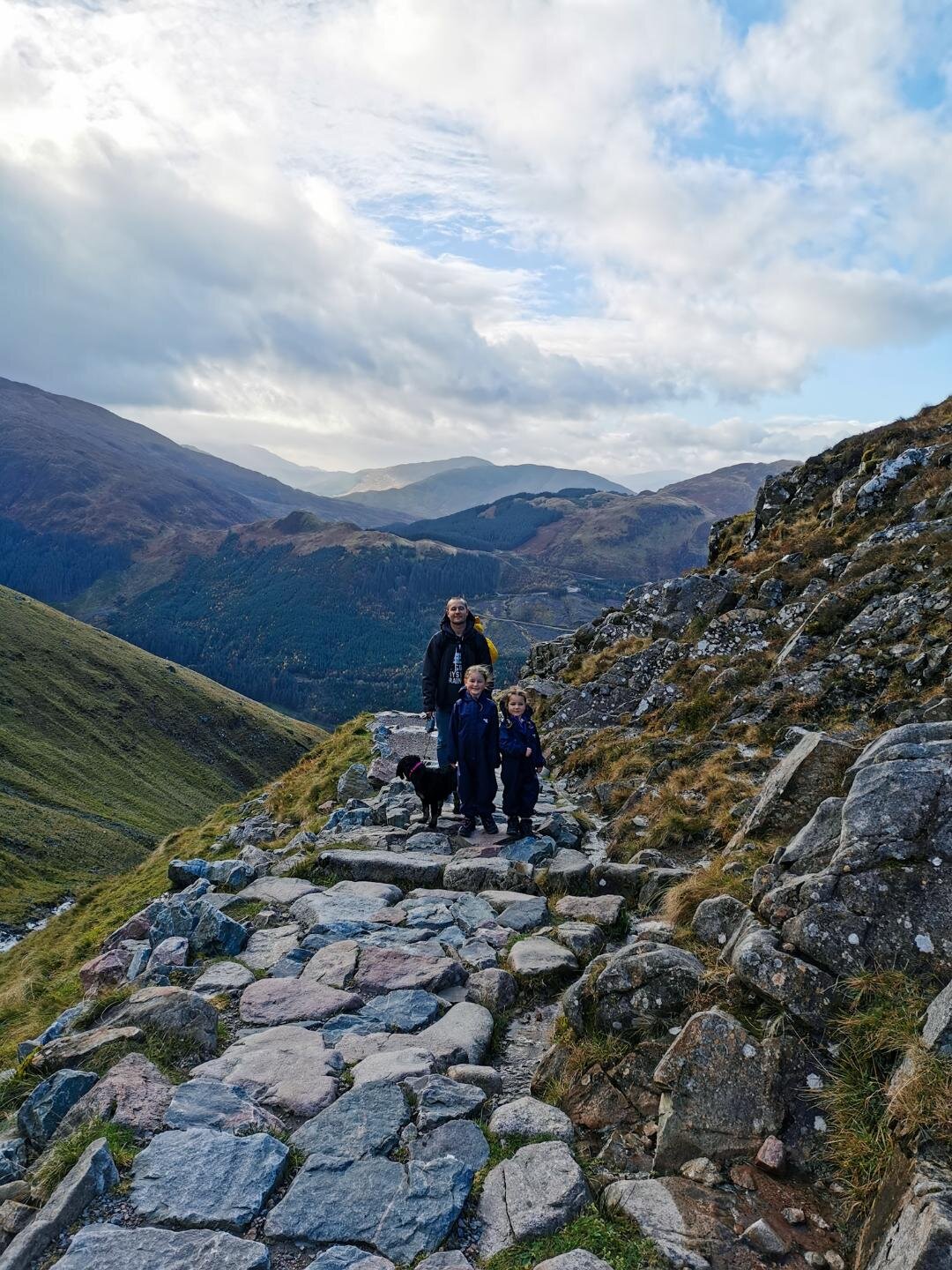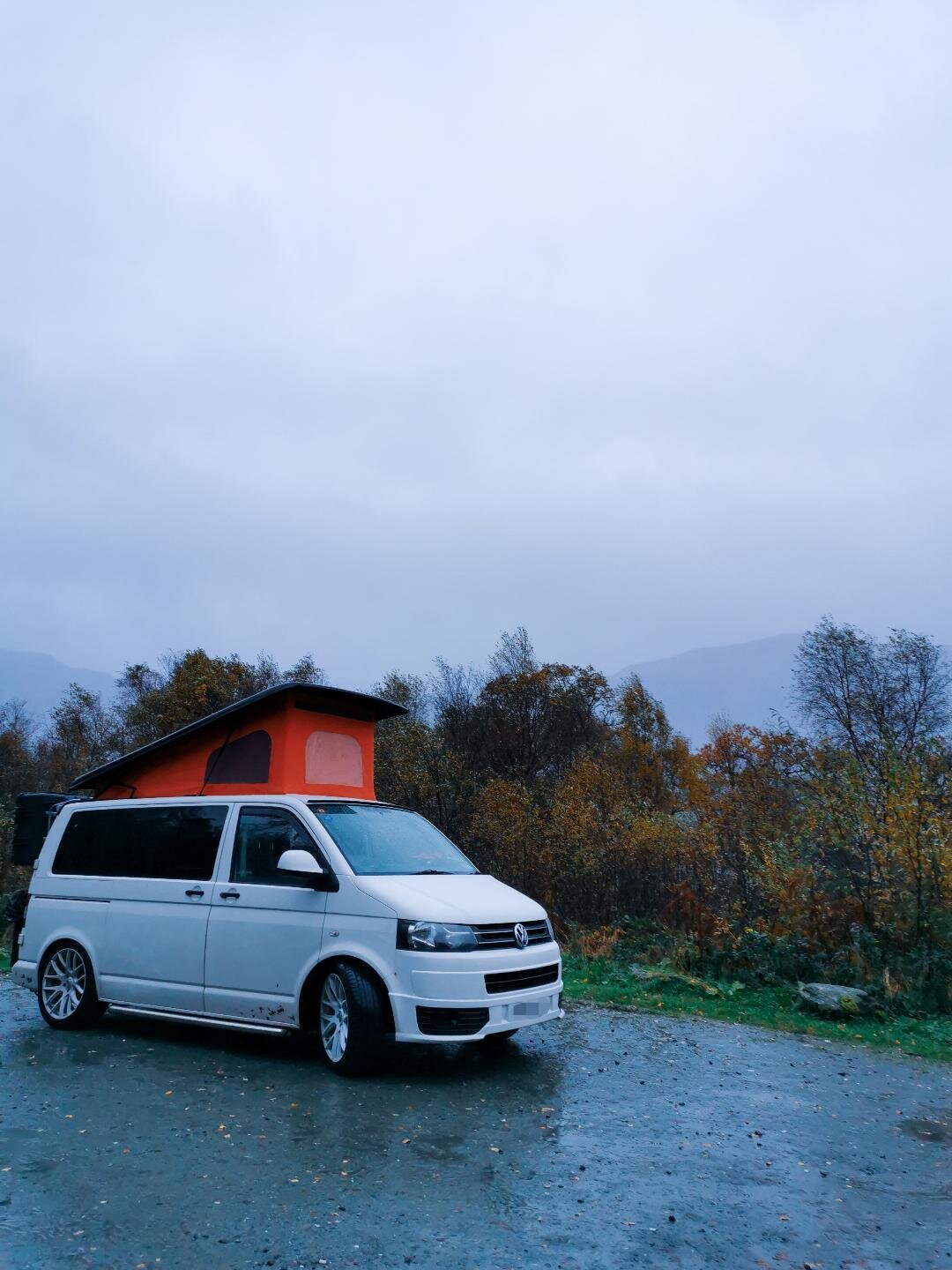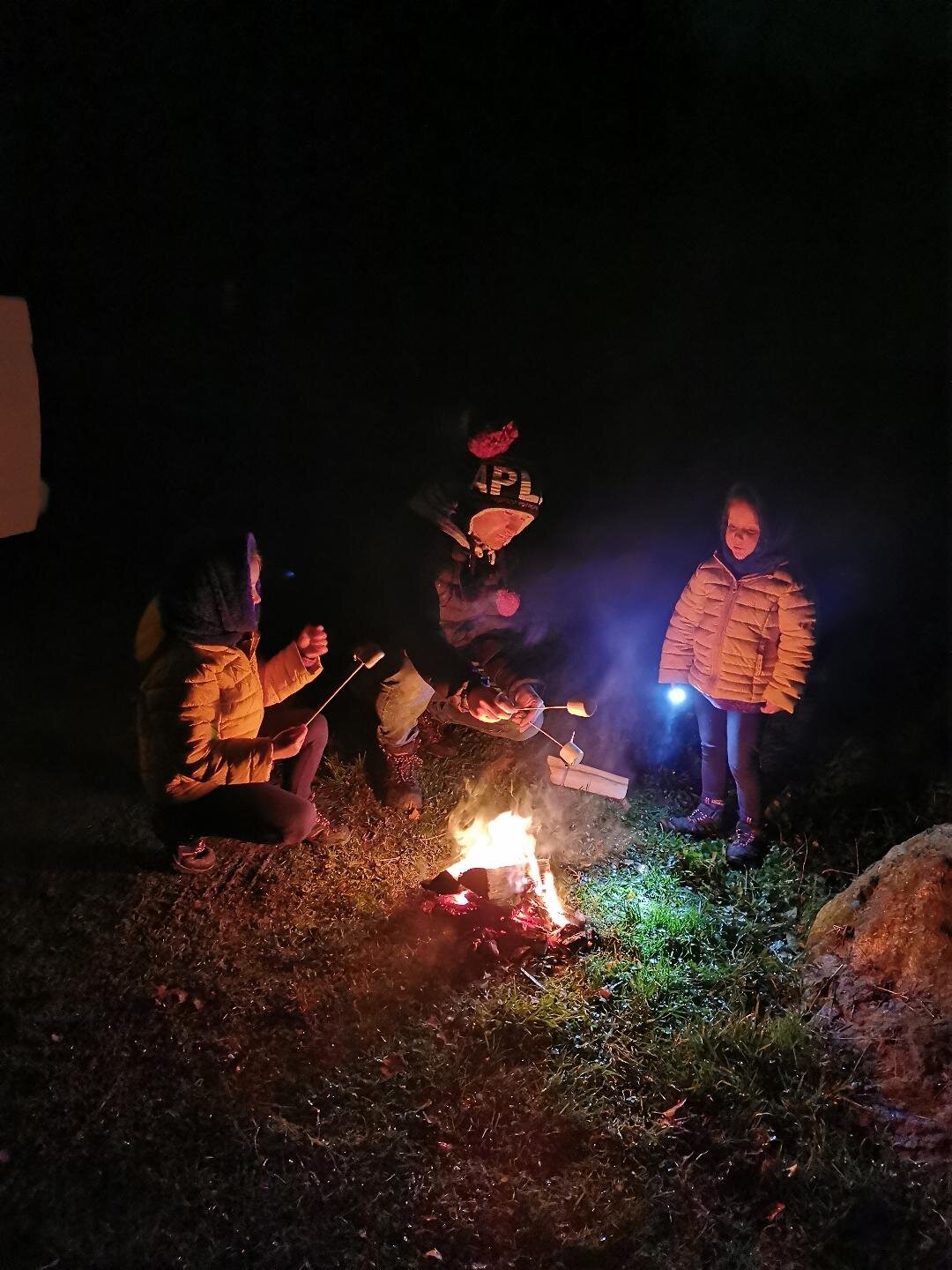Scottish Highlands and West Coast
SCOTLAND! We knew it would be stunning, we knew we would only be able to scrape the surface of this amazing country, but we just were not prepared for exactly how breathtaking every single turn would be!
Living in East Anglia, Scotland isn’t an easy reach. Glasgow is seven hours for us - without stops - but oh how I wish we had taken the journey sooner!
Scotland is vast and has so much to offer! There is so much more to see, experience and explore that we plan on many more trips to this amazing location. However, in this blog, I focus on our first vist - on a wild camping trip that required some changes to our standard campervan set up. Video of alterations can be found here. Wild Camping packing tips can be found here.
Day One
Due to the lockdown in place at Glasgow at the time, we knew we needed to drive past the area. We decided to travel to Loch Lomond and the Trossachs National Park and then assess where we wanted to head from there. Upon arrival, we were greeted with ‘Camping Management Signs’ which basically means you are required to apply for a permit to wild camp in Loch Lomand and the Trossachs National Park between March and September. You can apply for a permit here. If you intend on camping in this area during these months, you will need a permit for each campervan/tent. Each unit is £3 per night and you are then welcome to stay up to three nights in each area. Whatever time of year you visit Scotland, if you intend to wild camp then it is worth reading my Wild Camping Dos and Dont’s.
Luckily, we managed to find a spot outside the permit zone just off the A83 near Arrochar for our first night in Scotland. Instantly we noticed a difference about pulling up in a wild camping spot, compared to a campsite was the floor. It was covered in very damp leaves and dirty (unlike a camping pitch). It made it very difficult to put anything down - even for a moment while we were organizing the van for our first night and cooking the dinner etc. You can read more about our first night here.
Day Two
We awoke after a good night’s sleep and made egg muffins for breakfast. We left our wild parking spot in Loch Lomand and the Trossachs National Park with no real idea of where we were heading for, so we got very distracted with the stunning Scottish landscapes and wildlife. The highland cows were a particular favourite of the girls. Eventually, we decided to walk to Letttermay Burn, which rises off the western shore of Loch Goil, up into the heart of the Cowal Peninsula where there are lots of beautiful waterfalls and some perfect spots for a wild swim.
Dinner was a delicious chicken soup which was well needed after such a cold and wet day in Scotland. More Camping Meal Favourites can be found here. We stayed in a Forestry Commission car park - Fearnoch Forest Car Park.
Day Three
Waking up in the stunning autumn colours in the forest was very special. We enjoyed a wonderful walk, before heading off towards Glencoe.
Everything we had seen to date was very special but driving through Glencoe, in the heart of the highlands, was unlike anything we had ever experienced before. I would imagine that this is somewhere so special, that it unfortunately becomes very busy during the peak season! We decided while the weather was mild that we would continue driving towards Glen Etive to try and spot some wild deer.
The Glen Etive road is twelve miles of peak Scottish scenery – mountains, moorland, lochs and huge skies. The single track road was the best drive we made in Scotland, although it finished in a dead-end, which during the day is busy with walkers and parked cars. Once the evening falls, this makes the ideal wild camping spot (PH49 4JA). You will lose all phone signal at some point along the road, but you can’t go wrong - just drive until you can’t drive anymore!
At the end of the road, you will find Loch Etive. It is 30km long, 1.5km wide and reaches a depth of 150 metres. Its vast clear waters stretch off into the distance and we loved how the calm waters reflected the sky perfectly like a mirror. It is possible to walk along the loch or it could be explored by water.
Day Four
Without a doubt, morning four was most special. We woke early and could clearly hear the deers calling to each other all around us. We set off in search of them! Unfortunately we didn’t find any on this occasion, but we did enjoy the magical surroundings. Instead, we travelled to Glenfinnan and its world famous Viaduct.
Glenfinnan attracts many thousands of visitors from around the world to experience the stunning scenery, but also the special atmosphere. The famous Glenfinnan viaduct carries the railway to Glenfinnan Station across a 1,000 ft span - 100 ft above the ground. The Jacobite steam train runs from here to Fort William and Mallaig in summer months, with regular trains available the rest of the year. You can find out more about the Jacobite Steam Train and buy tickets here. You can see a video of the Jacobite Train travelling over the Glenfinnan Viaduct here.
We managed to find a stunning wild camping spot along the A830 between Lochailort and Roshven, overlooking the Loch Ailort. Initially the road was a little noisy, but the traffic dropped to virtually no vehicles over night.
Day Five
Unfortunately, the relentless wet and wild weather prevented us exploring the stunning coves and beaches along the A830. Instead we hid in the campervan for a while. (Five days in the constant rain felt like five weeks at this point!) Once the heavy rain stopped, we headed to the coast. Mallaig, Morar and Arisaig were our beaches of choice. Morar and Arisaig were our favourites. There is a fabulous wild camping spot at Silver Sands, Morar with toilets and bins. The car park does have a height barrier of 2.2m, however, there are some scattered roadside parking spots in the same area.
The Silver Sands of Morar are a celebrated series of beautiful sandy beaches. A stunning string of white sandy beaches, with spectacular views out to the Small Isles of Rum, Eigg, Muck and Canna, the Silver Sands of Morar are a spectacular destination. A popular place with walkers, the beaches are all accessible from the road and can be enjoyed individually or as a trail.
Day Six
Leaving the coast, we decided to head inland on the lookout for a campsite. We wanted a shower and needed to empty the porta potti again. We checked into Glen Nevis Campsite which is situated at the base of Ben Nevis and surrounded by stunning scenery. Read more about our campsite review here. After a shower, we decided to walk to Dun Deardail Fort. Only the outline of this iron-age fort can still be seen among the grassy embankments, but it is a spectacular hilltop location with stunning views of Glen Nevis.
Day Seven
Ben Nevis is Scotland’s tallest mountain. It was once a massive active volcano which exploded and collapsed inwards on itself millions of years ago. Of course, we spontaneously decided to try and climb it with a six and eight year old! Needless to say, we didn’t make it to the top, but the girls did hike for several hours and I was so proud of them. We will be back to conquer the mountain another time when the girls are a little older and their legs are a little stronger.
As our week started to draw to a close, we decided to head further south towards Loch Lomand and the Trossachs. We finished our trip with a beautiful wild camping spot on the A82 between Blairannaich and Tarbet. The dry evening meant we could enjoy a fire with marshmallows (the first of our trip due to the rain), some star gazing and some lovely chatter around the campfire. It was the perfect ending to our first Scottish adventure.
Some of the items listed contain affiliate links (these are clearly marked). As an Amazon Associate, I earn a small amount from qualifying purchases at no extra cost to you. Please understand, this helps me continue to bring high quality content to the blog regularly.

